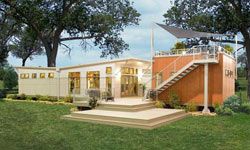The residents of Ridgeway, Va., are holding their collective breath. For years the Shady Rest mobile home park on U.S. 220 was an eyesore. Some of the homes were poorly maintained and stacked close together like cord wood. The park itself was littered with debris [source: Collins].
Finally, the mobile home park closed and Ridgeway residents exhaled. Now, Atul Chumble, the new owner of the property, wants to reopen the park, and the neighbors of the former Shady Rest are once again upset. They don't want to see another rundown park built in its place. But Chumble says his plan is to update Shady Rest and turn it into a nice, livable community. Still, Ridgeway residents want local officials to keep an eye on the project. As for Chumble, he told neighbors that he doesn't like eyesores himself [source: Collins].
Advertisement
The reaction of Ridgeway is understandable. Manufactured home parks, more commonly known as trailer parks, are like the Rodney Dangerfield of homeownership -- they get very little respect. So, when one is planned for a community, all heck breaks loose. Neighbors immediately fear property values will go down, crime will run rampant, and the park itself will be littered with junk cars, sofas on the front lawn (if there is a lawn) and kids in sagging diapers.
Little do the residents of Ridgeway realize that a new era of manufactured homes has dawned. Today, most people would be hard pressed to tell the difference between a manufactured home and a site-built home. Manufactured homes now come with landscaped lawns and garages. Many are multi-story structures that have energy efficient heating and cooling systems and ENERGY STAR appliances.
More than 17 million Americans live in manufactured homes. What do they know that the rest of us don't? Read on to find out the 10 advantages of a manufactured home.



